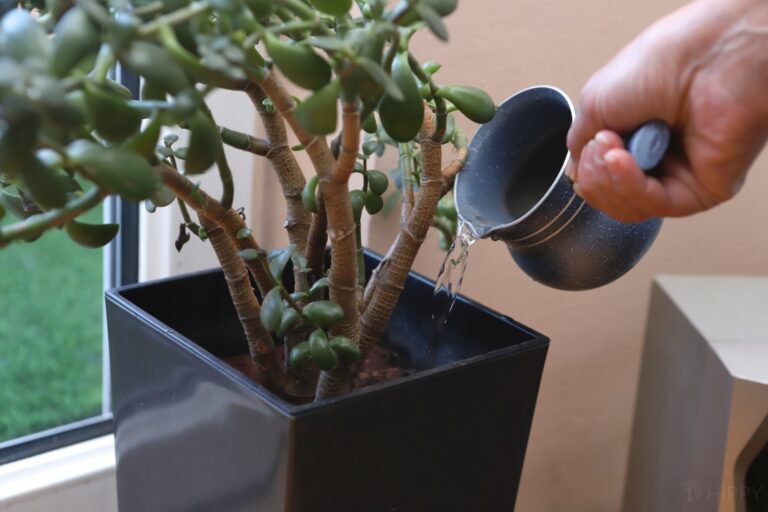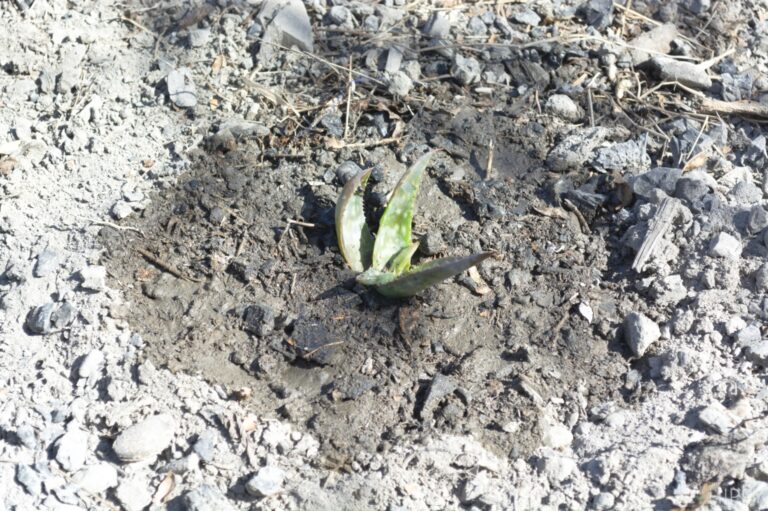Just as you react to varying temperatures, plants also react to different water temperatures. Using water that’s too cold can cause all kinds of problems, potentially with their growth but also their overall health!

Since most plants need to be protected from cold, several sources on the internet have alleged that you should always water plants with warm, even hot, water to give them a little bit of help against the chill. It makes a certain amount of sense, but is this a good idea?
No, it isn’t. Watering your plants with hot or warm water is only going to cause trouble. Elevated water temperatures tend to cause plants to shrivel or even worse damage. Very hot water can kill plants or severely damage them. Room temp water is best, especially for indoor plants.
Keep reading and I’ll tell you how warm is too warm, and what water temp is best for your plants instead.
What Constitutes Warm Water, Exactly?
When it comes to tending to your plants, what exactly are we referring to when we say “warm water”? In most contexts, warm water typically refers to water that is around 75°F / 23°C. So what constitutes “warm” for you, as in bathing, and “warm” for our plants is quite different!
This difference in perception is important when it comes to avoiding harm. What feels cool to your skin might already be a bit warm for plants!
So, remember, when we talk about warm water for plants throughout this article, we’re generally talking about water that usually feels slightly cool to the touch if you aren’t already chilly yourself!
Is Warm Water Bad for Plants?
It can be. The answer isn’t as straightforward as we’d like, and it depends on how warm we are talking about, here. While it’s true that plants generally prefer water that is close to their own current temperature, slightly warmer water isn’t necessarily harmful. However, there’s definitely a limit to how warm the water can be before it starts to cause problems or injury…
How Can Hot Water Harm Plants?
When the water temperature is too warm or too hot, it can cause a range of problems for plants of all kinds.
As the water temperature nears and exceeds 90°F / 32°C, it will be more likely to negatively affect your plants, and affect them more seriously. At this temperature, the warm water could stress the plant’s tissues, cause it to shrivel, and potentially harm leaves or delicate roots.
Roots are designed to take up cool to lukewarm water from the soil, and they can be shocked by an abrupt change in temperature. This shock can lead to root damage, impeding the plant’s ability to absorb water and nutrients effectively.
When the temperature reaches 120°F / 48°C, it’s almost certain to cause some significant damage. At high temps like these, the water can toast the plant’s roots and even cause the plant cells to break down in the stems and tougher leaves.
Not good, as this piping warm water can cause the protective coating on a plant’s leaves to degrade. This coating is vital for preventing water loss and protecting the plant from pests and diseases. Without it, the plant becomes vulnerable to all sorts of issues.
Obviously, all of these outcomes are terrible, and at the very least will impair growth and more likely cause legit harm.
Water that is only a little warm is harmless or at least not a big deal, but you must think twice if your water is quite warm for any reason, be it from a tap left on hot or a sun-warmed watering can or tank.
Always strive to use slightly cool or lukewarm water; your plants will thank you for it! We’ll talk more about that in a minute.
Is Boiling Water Bad for Plants?
It sure is, and about as bad as it can get. The only, and I mean only, reason to even think about using boiling water on any plants is if you want to kill them.
There’s a precedent for it: it can “hard kill” weeds and other unwanted plants with no chemicals and no risk of harm to the environment.
But for plants you actually like, boiling water is not only bad, it’s downright devastating. Any water heated close to its boiling point of 212°F / 100°C or higher is far too extreme for any plant on Earth to withstand even incidental contact, and immersion or soaking is utterly deadly.
The worst damage is at the root level: a plant’s roots are designed to absorb water and nutrients from the soil. When exposed to boiling water, these roots can get severely burned, completely halting their ability to function as designed.
Even if the rest of the plant is unharmed, this will lead to the plant wilting and eventually dying due to a lack of necessary hydration and nutrition in the aftermath.
Furthermore, boiling water can also kill the foliage of the plant, literally cooking it. The delicate tissues of leaves and stems will become scorched on contact with the boiling water, leading to immediate discoloration, curling, and certain death of these parts.
Boiling water is also likely to cause severe thermal shock in plants. This sudden change in temperature can cause plants to die even if enough roots and foliage survive direct damage and would, under other circumstances, persist. If this happens, the damage is irreversible, and the plant is probably done for.
Should You Use Cold Water, Then?
After reading all that, you are probably thinking, “If warm or hot water is harmful to plants, then cold water must be the better option.” Not so fast, friendo! That’s not necessarily the case. In fact, using cold water to water your plants can also have negative effects!
Just as plants can suffer from thermal shock due to hot water, they can experience the same from cold water. A sudden drop in temperature can stress the plant and lead to the same kind of cellular damage described above.
You know how you’re supposed to harden off indoor plants before transplanting or relocating them outside? Same thing, only it isn’t air temperature you are worried about.
In some cases, cold water can cause certain plants to enter a dormant state, similar to their winter response. In any case, this slows down growth and can adversely affect the overall health of the plant.
Moreover, cold water can again harm the root system. Plant roots prefer a temp-stable environment and drastic temperature changes will impair their function.
So while it’s understandable that you might shy away from hot water as much as you can after reading all that above, cold water is also a bad choice.
Room Temp or Tepid Water is Always Best
Now that we’ve established that both boiling and cold water can harm your plants, what’s the ideal temperature?
As with most things, the answer is somewhere in the middle: not too hot, not too cold, but just right. In terms of exact numbers, the water you use to water your plants should be about 65°F / 18°C.
Watering your plants with room temperature, lukewarm, or tepid water helps keep their environment stable and accordingly stress-free. It’s close enough to the temperature of normal soil, which means it won’t shock the roots or cause any unnecessary harm.
In addition to keeping your plants happy themselves, room-temperature water is also absorbed more readily and quickly by the soil.
This ensures that your plants get the hydration they need over time, unlike cold water which can sometimes cause the soil to compact, making it harder for the water to reach the roots.
So, the next time you’re about to water your plants, just remember that room temperature is the way to go.
Let Water Assume Room Temp Before Watering House Plants
When it comes to watering your houseplants, plants that are invariably more delicate than their outdoor cousins, here’s a little trick that can make a big difference: let the water sit until it reaches room temperature.
Whether you’ve drawn warm or cool water from the tap, it’s best to let it sit for a while before watering your plants. This allows the water to assume the same temperature that the plants are, which is whatever the temp of your house is (assuming they aren’t near a window or a drafty spot).
Watering your plants with water at this mild temperature greatly helps to prevent shock that can occur from even relatively minor, but sudden, changes in temperature.
So next time you’re ready to water your houseplants, park it for a moment and let that water sit for a bit.

Outdoor Plants Will Usually Do Fine with Water Right Out of the Tap
Unlike houseplants, outdoor plants are naturally more resilient to variable conditions. They face fluctuating weather, changing seasons, and varying temperatures every single day, day in and day out, and sometimes those swings can be pretty extreme.
So when it comes to watering them, they usually do just fine with water straight from your spigot or rain barrels. Assuming you aren’t dealing with very cold or very hot water, they should all handle it fine.
However, not all outdoor plants are created equal. Some are just particularly delicate, like many herbs, and so should be treated accordingly.
Some plants thrive in extreme environments, whether it’s hot deserts or chilly mountaintops, and may prefer water temperatures that better correspond to their natural habitat. For instance, a cactus might appreciate somewhat warmer water, while an alpine plant might prefer cooler.
So, while most outdoor plants will happily accept whatever temp water comes out of the tap or tank, it’s always a good idea to research their specific needs if you have any doubts whatsoever. When in doubt, use the lukewarm water strategy we talked about above.
Tim is a farm boy with vast experience on homesteads, and with survival and prepping. He lives a self-reliant lifestyle along with his aging mother in a quiet and very conservative little town in Ohio. He teaches folks about security, prepping and self-sufficiency not just through his witty writing, but also in person.
Find out more about Tim and the rest of the crew here.

I’m wondering if I can kill quack grass with boiling water?